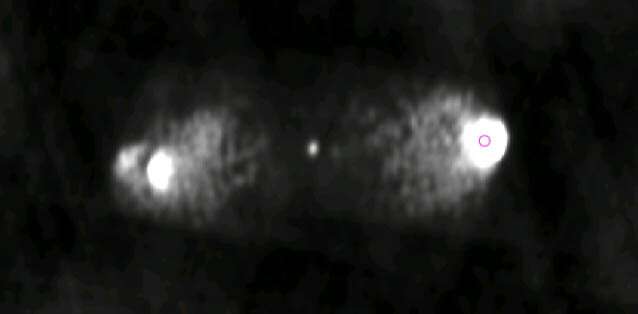The nature of obscured active galactic nuclei

Most galaxies host a supermassive black hole (SMBH) at their nucleus, one whose mass exceeds a million solar-masses. When material actively accretes onto the SMBH, associated processes can produce an active galactic nucleus (AGN) with a hot torus and dramatic bipolar jets of rapidly moving charged particles. The most luminous known AGN emit over ten trillion solar-luminosities. Astronomers are trying to understand what powers AGN, how they evolve, and how their jets and radiation affect their environments, and these extreme cases are expected to provide key insights.
Quasars are perhaps the best-known luminous AGN, and their nuclei are visible and relatively unobscured by dust. But there are cases where the torus of material around the nuclei happens to block our line-of-sight. These obscured AGN have no visible emission lines and so are often omitted from studies, but they are needed to provide a more complete view of the population. A foremost question is whether these very luminous AGN are powered by moderate accretion onto very massive black holes, or instead by extreme accretion rates onto moderate-mass black holes, or perhaps something in between.
CfA astronomer Fabio Pacucci was a member of a large international team of scientists that combined observations from the Swift satellite's X-Ray Burst Alert Telescope AGN Spectroscopic Survey (BASS) with radio, optical, and infrared datasets. They studied twenty-eight of the most luminous, relatively nearby AGN, most of which are located in elliptical galaxies. Apart from their dramatic nuclear activity, the set have no other distinctive properties; their radio emission, for example, spans a factor of ten thousand, and the inferred masses of their supermassive black holes also cover a large range. Some of these results are surprising: since the jets are responsible for radio emission, it was thought that radio strength would correlate more closely with the X-ray emission or the black hole masses. The authors conclude by speculating that, if the results hold up in larger studies, the intense growth of supermassive black holes and correspondingly intense emission is not a property of any particular type of galaxy but rather is linked to the transformation of galaxies from star-forming spirals to quiescent ellipticals during episodes of major merging.
More information: Rudolf E Bär et al. BAT AGN Spectroscopic Survey – XIII. The nature of the most luminous obscured AGN in the low-redshift universe, Monthly Notices of the Royal Astronomical Society (2019). DOI: 10.1093/mnras/stz2309
Journal information: Monthly Notices of the Royal Astronomical Society
Provided by Harvard-Smithsonian Center for Astrophysics





















